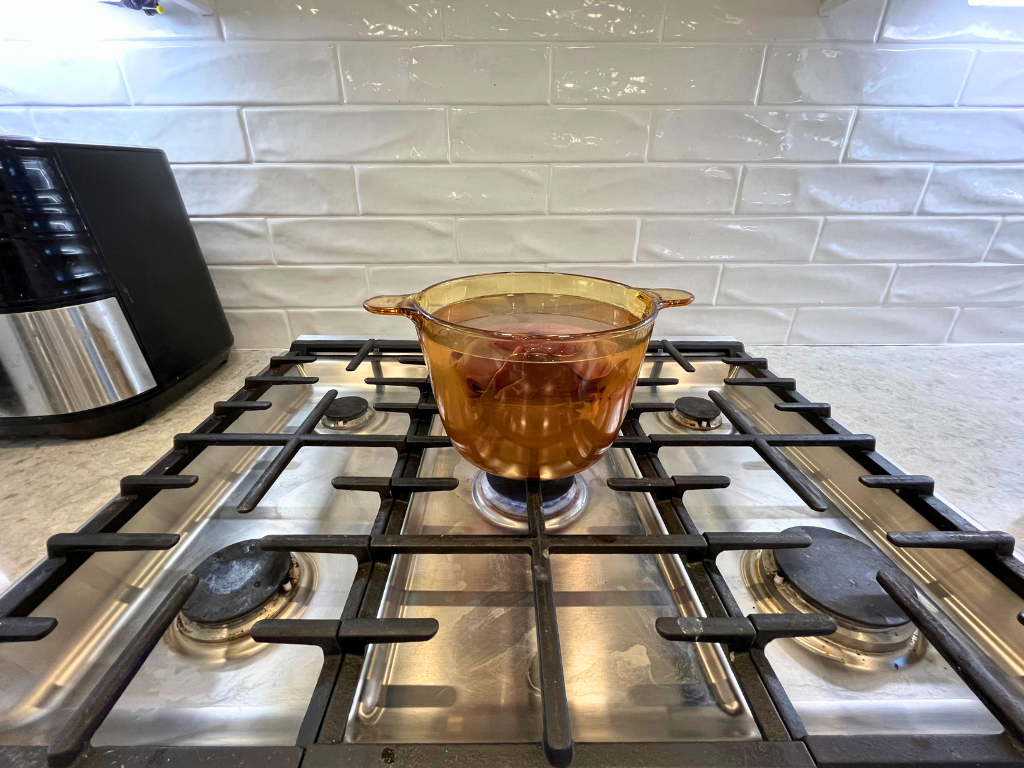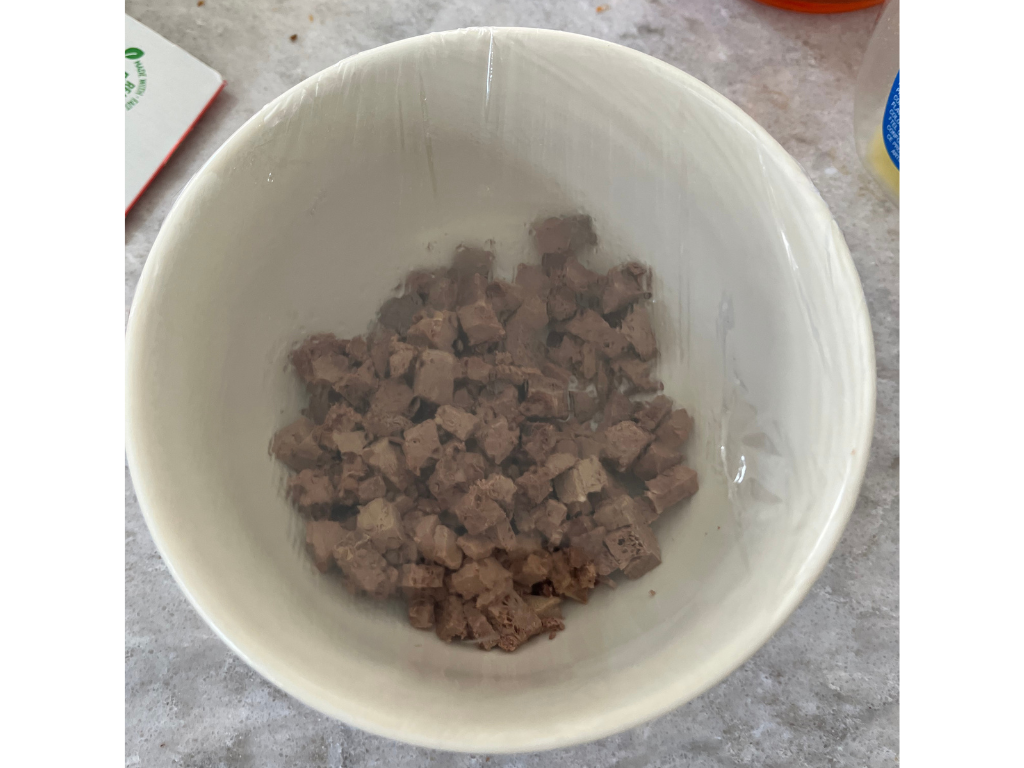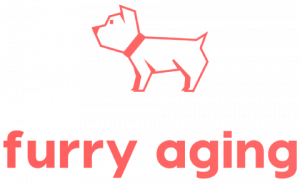
Homemade diets offer many benefits for aging pets as it involves the use of fresh and nutritious ingredients. Pets on homemade diets often experience improved hair and skin condition, as well as increased energy levels.
Many pets with specific dietary needs also see improvements in their health after being fed homemade meals that have been tailored to their needs.
Symptoms such as excessive shedding, itching, skin lesions, and digestive issues can often be alleviated by switching to a homemade diet, especially if the pet has food allergies or intolerances to commercial diet ingredients.
But, many pet owners make the mistake of feeding their dogs with leftovers, as part of a “homemade diet”. The problem with that is that dogs’ nutritional needs are different from human’s, and determining the optimal diet for your pet requires careful consideration of their age, health, and activity levels. This involves finding the right balance of essential nutrients, such as protein, fats, carbohydrates, vitamins, and minerals.
This article will provide nutritious and delicious homemade food recipes for senior dogs, along with expert guidelines to help you create balanced meals that meet your furry friend’s specific nutritional needs.
- Nutritional Needs of Senior Dogs
- Nutrient Profile for Senior Dogs
- 3 Homemade Food Recipe Ideas for Senior Dogs
- Tips for Preparing and Storing Homemade Dog Food
- Transitioning to Homemade Dog Food: Step-by-Step Guide
- Cost Comparison: Homemade vs. Commercial Brands
- Common Mistakes to Avoid and Troubleshooting Tips
- Conclusion
Nutritional Needs of Senior Dogs
As pets age, their nutritional needs change, and it’s important to design a feeding program that maintains their health and weight, slows or prevents chronic disease, and improves any existing clinical signs. However, if an older dog is healthy, in good shape, and eating a suitable diet, there’s no need to switch to another diet based solely on their age.
Obesity is the most common form of malnutrition in dogs in developed countries and can cause other health problems such as osteoarthritis, diabetes, respiratory and cardiovascular problems, neoplasias, etc. In these cases, diets with lower fat and calories and more protein may be beneficial.
You can also refer to Optimal Senior Dog Food: Nutrition for Healthy Aging to learn more about the nutritional needs of senior pups.
Nutrient Profile for Senior Dogs
A nutrient profile is a specific and unique combination of:
- Protein: For promoting the growth and maintenance of cells, tissues, organs, antibodies, hormones, and enzymes. Protein is especially important in senior dogs, as a decline in lean body mass occurs with aging. Sources of high-quality protein are chicken, lamb, turkey, beef, fish, and cooked eggs.
- Healthy fats: For absorbing specific vitamins, protecting internal organs, promoting good skin and hair growth, and joint and brain health. Sources of fat are oil and meat.
- Carbohydrates: For keeping intestines healthy and supplying glucose to critical organs, including the brain. Sources of carbohydrates are whole grains and vegetables.
- Minerals, including calcium, potassium, sodium, magnesium, iron, and zinc: For promoting bone and teeth health.
- Vitamins A, B, C, D, E, and K: For promoting eye and skin health, immunity, and more.
The nutrient profile of a senior dog will differ from that of a puppy. It will also differ based on your dog’s size and health – for instance, the nutrient profile of a healthy senior dog will be quite different than the nutrient profile of a senior dog with kidney disease.
3 Homemade Food Recipe Ideas for Senior Dogs
1. Salmon and Quinoa
Preparation time: 30 mins
Servings: approx. 7
Ingredients:
- 5 lbs. salmon, cleaned.
- 2 lbs. Cauliflower.
- 2 lbs. Cabbage.
- 1 lb. Celery.
- 1 lb. yucca root.
- 1 cup olive oil.
- 1 lb. green apples.
- 2 cups cooked quinoa.
Preparation:
- Preheat the oven to 350F.
- Place the salmon on a tray and bake for 20 mins. Then, remove it from heat and let it cool.
- In a pot, add the quinoa with 4 cups of water, bring the water to a boil for 15-20 mins. Then remove it from heat.
- Wash, chop, and grind the veggies in a processor, and put them in a large bowl.
- Remove the seeds from the apple and chop and grind in the processor. Then place the apple pieces in the same bowl with the veggies.
- Grind the salmon to a paste in the food processor.
- Add the salmon paste and olive oil to the bowl.
- Drain the quinoa and add it to the bowl.
- Mix everything thoroughly, portion your meals, and freeze.
2. Turkey and Veggies
Preparation time: 30 mins.
Servings: approx. 7
Ingredients:
- 6 lbs. Ground turkey.
- 2 lbs. Strawberries.
- 2 lbs. Cabbage.
- 2 lbs. Yucca.
- 2 lbs. Cauliflower.
- 2 lbs. Celery.
- 1 cup safflower oil.
Preparation:
- In a large pot, add the ground turkey and fill it with water. Bring it to a boil, then set it to low heat for 25 mins. Remove it from heat, allow it to cool, and then drain the water.
- Wash, chop, and grind all the veggies in the food processor. Put them in a bowl.
- Wash the strawberries and grind them in the food processor. Then add them to the bowl.
- Add the ground turkey to the bowl.
- Add the safflower oil and mix all the ingredients.
- Portion your meals and freeze them.
3. Liver and Buckwheat
Preparation time: 60 mins.
Servings: approx. 7
Ingredients:
- 1.5 lb. Chicken liver (or beef).
- 1 cup buckwheat
Preparation:
- Chop the liver into bite-size pieces.
- In a large pot, add the chicken liver and fill it with water. Bring it to a boil, then set it to low heat for 10-15 mins. Remove it from heat, and allow it to cool.
- Reserve the liver water, because we can use it later to add moisture and extra flavor to the meals.
- Sort the buckwheat, make sure to remove any stones or black pieces of buckwheat. Place it in a medium pot, and add 1 cup of boiling water. Cover with a lit, and let it cook with the steam for about 1 hour.
- Mix the cooked liver and buckwheat in a bowl.
- Portion your meals and freeze them.

*The number of servings is just a reference, as the portion sizes will vary depending on breed, weight, activity level, age, and the health of your dog. Always consult with your veterinarian to make sure your dog’s diet meets their nutritional needs.
Tips for Preparing and Storing Homemade Dog Food
- Measure the portions based on your dog’s caloric needs.
- Frozen rice vegetables like cauliflower, sweet potato or broccoli are a good option for saving time, and for dogs with dental issues.
- Use a food processor to speed up the preparation process.
- Experiment with textures, for example, mix the rice with beef stock.
- Freeze the portion using freezer bags or small containers.
Transitioning to Homemade Dog Food: Step-by-Step Guide
- Always talk with your vet before making any changes in your pet’s diet.
- Gradual transition from commercial to homemade food.
- Monitor and assess your dog’s response to a new diet.
- Monitor your dog’s body condition, weight, and energy levels.
- Always provide fresh water to keep your dog hydrated throughout the day.
Cost Comparison: Homemade vs. Commercial Brands
Homemade diets are more costly than dry commercial food but less expensive than wet commercial food, offering a middle-ground option.
You can further manage expenses per meal by modifying the ingredients used. For instance, homemade diets that are chicken-based are generally more affordable than those based on beef, with a difference in cost of approximately 43%.
| Body Weight | Homemade Chicken | Homemade Beef | Dry food Super Premium | Dry food Premium | Dry food Standard | Wet food |
|---|---|---|---|---|---|---|
| Lbs. | USD/day | USD/day | USD/day | USD/day | USD/day | USD/day |
| 6 | 0.6 | 0.8 | 0.2 | 0.1 | 0.1 | 1.9 |
| 30 | 1.9 | 2.7 | 0.6 | 0.3 | 0.4 | 6.4 |
| 60 | 3.2 | 4.5 | 1.0 | 0.5 | 0.6 | 10.8 |
| 100 | 4.7 | 6.7 | 1.4 | 0.7 | 0.9 | 15.8 |
Common Mistakes to Avoid and Troubleshooting Tips
Here are some tips to avoid common mistakes and troubleshoot when making homemade pet food:
- To avoid nutrient deficiencies or excesses, it’s important to vary the source of each diet component, such as using different protein, vegetable, and grain sources in each batch of food.
- Calcium, phosphorus, zinc, magnesium, and iron are commonly imbalanced in home-prepared diets, so it’s crucial to provide supplementation. Calcium supplements can be included during the cooking process. Vitamin supplements should be added after food preparation is complete to prevent denaturation or inactivation.
- Follow recipes that have been formulated by animal nutritionists and meet the nutritional needs of your pet to reduce the risk of malnourishment. Avoid complicated or time-consuming recipes to reduce the likelihood of taking shortcuts.
- Portion feeding plays an important role in controlling calorie intake and decreasing your dog’s chance of becoming obese.
- Avoid excessive sodium in the diet because this can contribute to kidney disease and hypertension.
Conclusion
These recipes aren’t just about the joy of cooking for your dog; they’re a pathway to improve their health, energy, and well-being, especially in dogs with allergies and dietary restrictions.
However, the journey into homemade dog food preparation comes with responsibilities. Be mindful of your senior dog’s unique nutritional needs and consult with your veterinarian before making any dietary changes.
Sources
Remillard, R. L. (2008). Homemade Diets: Attributes, Pitfalls, and a Call for Action. Topics in Companion Animal Medicine, 23(3), 137-142. https://doi.org/10.1053/j.tcam.2008.04.006
Annibale Vendramini, T. H., Pedrinelli, V., Macedo, H. T., Amorim Zafalon, R. V., Risolia, L. W., Rentas, M. F., Macegoza, M. V., Gameiro, A. H., & Brunetto, M. A. (2020). Homemade versus extruded and wet commercial diets for dogs: Cost comparison. PLOS ONE, 15(7), e0236672. https://doi.org/10.1371/journal.pone.0236672
Fascetti, A. J.. (2010). Nutritional management and disease prevention in healthy dogs and cats. Revista Brasileira De Zootecnia, 39, 42–51. https://doi.org/10.1590/S1516-35982010001300006
https://vcacanada.com/know-your-pet/nutrition—home-made-diets
Related Articles:
Recent Posts
Amazon's Top Black Friday and Cyber Monday Deals for 2024: Dog Products Edition
The holiday shopping season has officially started and Amazon has already released some incredible deals on pet products for Black Friday and Cyber Monday 2024. Here is our curated list of the...
As someone who boards dogs as a side gig, I am used to seeing many pet trackers and smart collars these days. These devices have become a must-have tool for pet owners (especially when trusting their...
